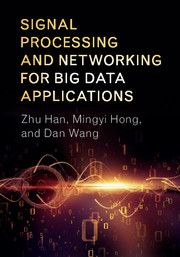Book contents
7 - Deep Learning and Applications
from Part II - Methodology and Mathematical Background
Published online by Cambridge University Press: 18 May 2017
Summary
Deep learning (also known as deep structured learning, hierarchical learning, or deep machine learning) is a branch of machine learning based on a set of algorithms that attempt to model high-level abstractions in data by using a deep graph with multiple processing layers, composed of multiple linear and nonlinear transformations. Deep learning has been characterized as a class of machine learning algorithms with the following characteristics [257]:
• They use a cascade of many layers of nonlinear processing units for feature extraction and transformation. Each successive layer uses the output from the previous layer as input. The algorithms may be supervised or unsupervised and applications include pattern analysis (unsupervised) and classification (supervised).
• They are based on the (unsupervised) learning of multiple levels of features or representations of the data. Higher-level features are derived from lower-level features to form a hierarchical representation.
• They are part of the broader machine learning field of learning representations of data.
• They learn multiple levels of representations that correspond to different levels of abstraction; the levels form a hierarchy of concepts.
These definitions have in common: multiple layers of nonlinear processing units and the supervised or unsupervised learning of feature representations in each layer, with the layers forming a hierarchy from low-level to high-level features. Various deep learning architectures such as deep neural networks, convolutional deep neural networks, deep belief networks (DBN), and recurrent neural networks have been applied to fields like computer vision, automatic speech recognition, natural language processing, audio recognition, and bioinformatics where they have been shown to produce state-of-the-art results on various tasks.
In this chapter we start in Section 7.1 with an introduction, giving a brief history of this field, the relevant literature, and its applications. Then we study some basic concepts of deep learning such as convolutional neural networks, recurrent neural networks, backpropagation algorithm, restricted Boltzmann machines, and deep learning networks in Section 7.2. Then we illustrate three examples for Apache Spark implementation for mobile big data (MBD), user moving pattern extraction, and combination with nonparametric Bayesian learning, respectively, in Sections 7.3 through 7.5. Finally, we have summary in Section 7.6.
- Type
- Chapter
- Information
- Signal Processing and Networking for Big Data Applications , pp. 126 - 168Publisher: Cambridge University PressPrint publication year: 2017



